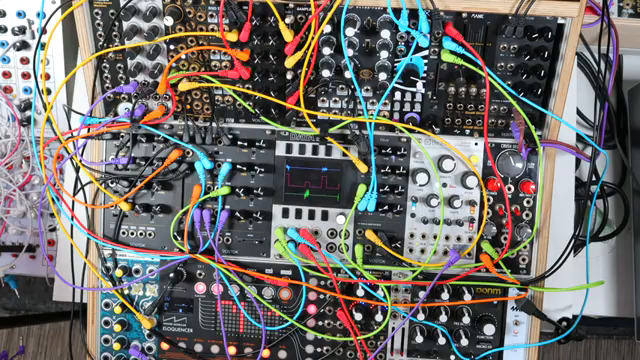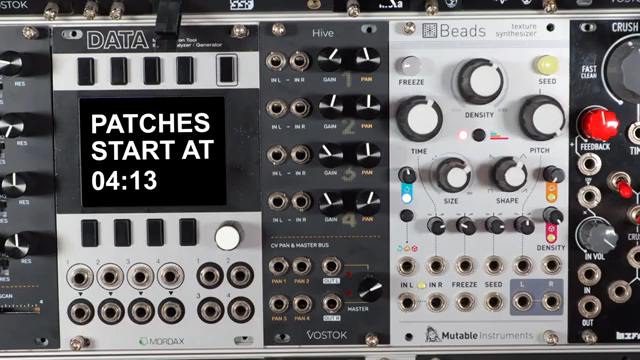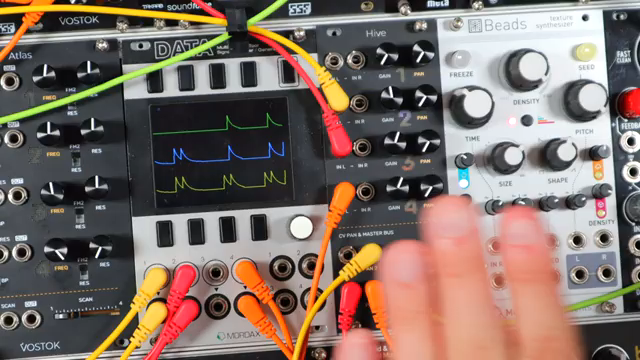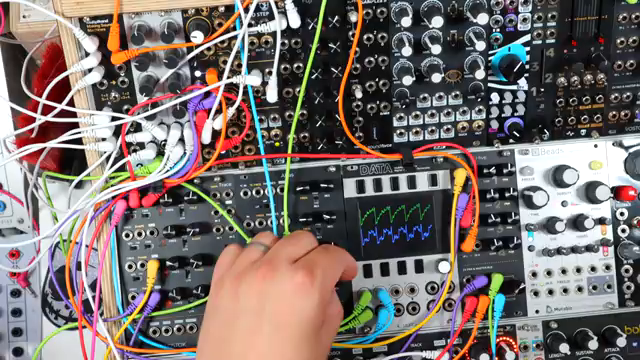Get ready to dive into the gritty world of Eurorack modular mixing with DivKid as he explores the Vostok Instruments Hive mixer. This punk rock inspired deep dive shows you how to harness Hive’s features to create chaotic layered patches that could turn even the dullest synth session into a wild rave. Expect hilarity, a bit of British irreverence, and loads of practical patching tips from one of the top names in modular mayhem.

5. September 2025
JET
DivKid’s Guide to Patching Chaos with Vostok’s Hive
Introduction to the Hive
DivKid kicks off by introducing the Vostok Instruments Hive, a 10HP stereo Eurorack mixer that’s designed to give your modular setup a proper kick up the backside. With its 9dB gain boost, it’s not just for balancing your modules, but also for integrating pro gear right into your patching mayhem. This bit of kit features panning and stereo balance controls, essential for messing with your audio signals like a punk rocker in a mosh pit. It’s equipped with a high-quality, high headroom audio path, making it as clean as you’ll ever need it to be. Oh, and it’s not intended for CV modulation, so don’t get any funny ideas.

"Hive features a 10 HP four channel stereo mixer with a few nice quirks on top of the basics."
First Patch Wonder: Layers and Effects

"Just take a listen for a moment before we strip it back."
In typical DivKid fashion, the first patch with Hive is a crash course in layering synth lines with a bit of techno flair. You’ll hear saw waves, square oscillators, and passive low pass gates spinning around like speakers at a dodgy club. He peels back the layers, mixing oscillators and incorporating effects, creating a vast and dynamic soundscape that’s got stereo width and proper 3D depth. DivKid demonstrates how to use Hive’s channels to simultaneously control delay and reverb channels, showcasing the potential of integrating multiple effects sends in a modular system. It’s like painting with sound, layer upon layer, to create a vivid picture that’s as messy as it is beautiful. Perfect for those late-night sessions when you want to get lost in your own sound exploration.
Submixes and Rhythm Reinforcement
Moving into submix territory, DivKid shows how Hive can be used to bolster those low-end techno kicks and dynamic hi-hats. He mixes a variety of rhythmic elements and uses probability and randomness to make them dance. Through clever panning tricks and the oddball use of panning as a VCA, he constructs a rhythmic landscape that reinforces and enlivens each part of the sound mix. This approach is fantastic for bringing life to steady sequences, adding a bit of controlled chaos into the mix, much like a mosh pit that keeps perfectly in time despite its explosive energy.
Panning Beyond Stereo
The Hive isn’t just about panning left to right. DivKid explores its panning capabilities as a signal router, explaining how this can work as an ad-hoc VCA for clever patching flexibility. This method lets you route and modulate sound within different feedback paths, essentially enabling a host of possibilities in shaping and manipulating audio. In this section, DivKid goes full mastermind, crafting complex audio modulations that weave through filters and effects, creating stereo images beyond typical expectations. It’s a showcase of Hive’s ability to serve as more than just a mixer but a crucial part of the creative modular arsenal. The audio rate panning and modulation techniques DivKid shares could easily turn a simple session into something akin to an audio sculpture.

"Panning is effectively just a routing mechanism."
Integrating and Expanding with Hive
Taking modular magic to another level, DivKid demonstrates how to expand Hive’s potential by chaining multiple units. This segment is all about maximizing your channel count without losing the distinctive high-quality sound. By linking multiple Hive mixers, you can handle more inputs and create soundscapes that are both frenetic and finely tuned. It’s like stitching together bits of a sonic quilt, each channel a patch in the greater whole. This level of expandability offers modular enthusiasts endless creativity, promising an experience that’s as immersive and layered as one could wish.
Creative Distortion Techniques

"How to clip a mixer that doesn’t want to - fantastic distortion."
DivKid pushes Hive to its limits, showing us how to make it clip even when it doesn’t want to. By cleverly using feedback loops and no input mixing techniques, he cranks up the heat to get that satisfying distortion and saturation every adventurous patcher craves. This isn’t just about overdriving the mixer; it’s an experiment in sonic manipulation, taking clean signals and twisting them into something raw and intense. Hive’s high headroom ensures that you can push your audio to the brink without sacrificing overall clarity. That’s bloody brilliant if you’re looking to turn your setup into a punk-inspired noise fest.
Latest articles
Watch on YouTube:
https://www.youtube.com/DivKid
Links from DivKid: